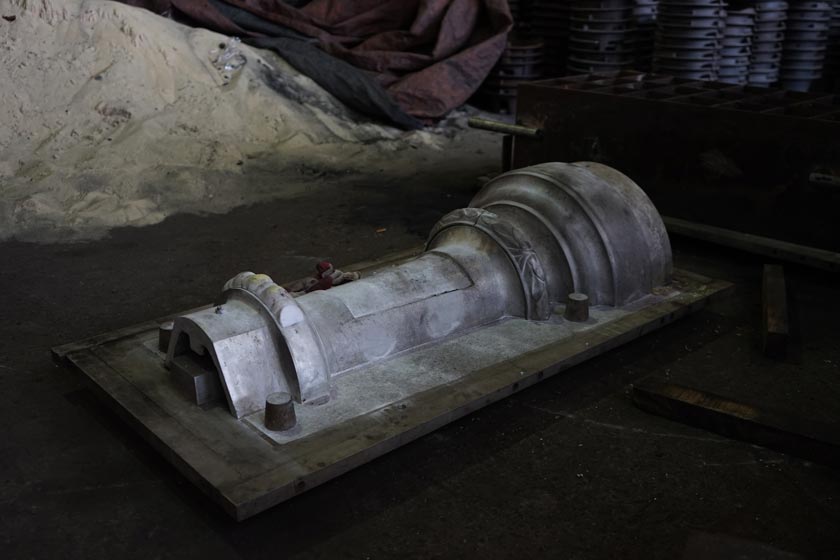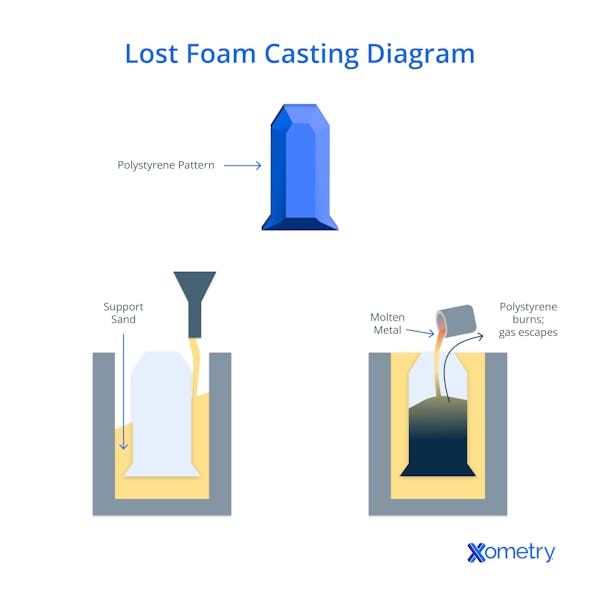Why Aluminum Foundry Wisconsin empowers casting businesses
Exactly How Aluminum Foundry Adds to Improvements in Aerospace Engineering
Aluminum foundries are essential to innovations in aerospace engineering. They produce lightweight, high-strength components that are essential for modern airplane. With innovative casting techniques, these foundries develop complex geometries that enhance architectural honesty. Furthermore, the growth of premium Aluminum alloys sustains the market's concentrate on fuel effectiveness and sustainability. Obstacles stay in the manufacturing procedure. Understanding these factors discloses the profound impact of Aluminum on aviation's future.
The Relevance of Lightweight Materials in Aerospace Layout
As the aerospace market remains to evolve, the importance of light-weight materials comes to be increasingly obvious. The need for efficiency and sustainability drives engineers to prioritize using materials that minimize overall weight without jeopardizing structural honesty. Lightweight products, specifically Aluminum, play a crucial function in enhancing gas efficiency, boosting payload capability, and raising the overall performance of airplane.
The combination of these products allows for innovative designs, allowing makers to develop even more wind resistant forms that can stand up to severe problems. The reduction in weight not just reduces functional expenses but also contributes to a lowered ecological footprint, lining up with international efforts toward sustainability in aviation.
Advanced Casting Techniques in Aluminum Foundries
Advanced spreading strategies in Aluminum shops play a crucial function in aerospace engineering by enabling the production of exact and lightweight components. Developments in mold design and precision spreading processes are important in achieving suitable performance and architectural honesty. Additionally, the development of lightweight alloys enhances the overall performance and performance of aerospace applications.
Ingenious Mold Style
Innovative mold and mildew design plays a vital function in the performance and efficiency of Aluminum factories, particularly within the aerospace field. By leveraging sophisticated materials and strategies, contemporary mold and mildews can be crafted to endure high temperatures and pressures, ensuring peak performance during the spreading procedure. These layouts commonly integrate complex geometries that permit the production of light-weight yet structurally audio components, essential for aerospace applications. In addition, the use of computer-aided design (CAD) software program helps with specific modeling, enabling factories to mimic and refine mold styles prior to physical production begins. This not just improves the top quality of actors parts yet additionally decreases waste and preparation, leading to considerable price savings. In general, ingenious mold and mildew design is a foundation of progression in Aluminum Foundry modern technology for aerospace engineering.
Accuracy Casting Processes
The effectiveness of ingenious mold and mildew styles flawlessly integrates with precision casting procedures, which are crucial for generating high-grade Aluminum parts in aerospace engineering. These procedures, consisting of sand casting, die casting, and financial investment casting, guarantee the creation of complicated geometries with limited tolerances. Advanced strategies like vacuum spreading and pressure die casting improve the integrity and surface finish of the end products. Accuracy casting reduces material waste while optimizing the mechanical homes of Aluminum, crucial for aerospace applications. On top of that, employing real-time surveillance and progressed simulation tools throughout the spreading process enables immediate modifications, bring about boosted top quality control. Collectively, these precision spreading processes position Aluminum shops at the leading edge of aerospace innovation, supporting the industry's need for integrity and efficiency.
Lightweight Alloy Development
As aerospace designers seek to enhance fuel efficiency and efficiency, light-weight alloy advancement becomes a vital emphasis in Aluminum foundries. These factories use innovative spreading methods to produce alloys that offer exceptional strength-to-weight ratios. Technologies in alloy make-up, consisting of the incorporation of components like lithium and magnesium, allow the manufacturing of products that withstand severe problems while decreasing total airplane weight. Methods such as die spreading and financial investment spreading assist in the precision production of complex forms, which are critical for aerospace applications. In addition, ongoing research study intends to enhance these alloys for improved mechanical buildings and increased toughness. By prioritizing light-weight alloy development, Aluminum factories significantly add to the development of aerospace design, leading the way for extra effective and sustainable aircraft styles.

Enhancing Structural Integrity Through Aluminum Parts
Aluminum elements supply significant advantages in enhancing architectural honesty within aerospace engineering. Their lightweight nature contributes to total efficiency while maintaining strength, which is necessary for airplane performance. Additionally, the anxiety resistance properties of Aluminum assistance guarantee the resilience and dependability of aerospace structures under various operational conditions.
Light-weight Product Advantages
While typical products frequently jeopardize weight for strength, utilizing Aluminum parts in aerospace design offers substantial advantages in architectural integrity. Aluminum's lightweight nature contributes to total style efficiency, permitting even more structured airplane that take in less gas, consequently boosting sustainability. The material's excellent strength-to-weight ratio assurances that components keep sturdiness without adding unneeded mass. This high quality fosters boosted performance and dexterity in trip, as well as enhanced payload abilities. Additionally, Aluminum's resistance to corrosion lengthens the life-span of aerospace frameworks, minimizing upkeep expenses and enhancing security. As makers progressively embrace Aluminum alloys, the aerospace industry experiences a transformative change in the direction of much more efficient and reliable engineering remedies that focus on both performance and environmental duty.
Tension Resistance Residences
Although different materials have unique properties, Aluminum's outstanding tension resistance sticks out as an important element in boosting the structural integrity of aerospace components. This resistance plays an essential duty in making certain that aircraft can endure numerous operational stress and anxieties, including fatigue, effect, and environmental problems. Aluminum alloys, especially crafted for aerospace applications, pop over to this site show high tensile stamina while keeping light-weight features, enabling designers to design more efficient frameworks - Aluminum Foundry. Furthermore, the capacity of Aluminum to sustain cyclic loading without substantial contortion adds to the durability and dependability of aerospace elements. As innovations proceed in Aluminum Foundry strategies, the growth of stress-resistant Aluminum parts guarantees additional improvements in performance, safety, and effectiveness throughout the aerospace sector, strengthening Aluminum's duty as a recommended product in modern design
Fuel Effectiveness Improvements Driven by Aluminum Innovations
As the aerospace sector seeks to improve fuel performance, innovative uses Aluminum have emerged as a necessary remedy. Aluminum's light-weight nature notably decreases aircraft weight, permitting reduced fuel intake during trip. This decrease in weight is crucial, as even little decreases can bring about considerable improvements in overall gas economic situation.
Advanced Aluminum alloys, made for improved stamina and sturdiness, allow producers to produce components that preserve structural stability while reducing mass - Aluminum Foundry. Additionally, the combination of Aluminum in airframes and engine components promotes enhanced aerodynamics, adding to decreased drag and increased effectiveness
The adoption of Aluminum in aerospace not just meets the demand for fuel-efficient design yet additionally aligns with governing pressures for lower discharges. As these innovations proceed to progress, they play a considerable duty in setting brand-new standards for fuel effectiveness, ensuring that the aerospace field can fulfill growing ecological and financial difficulties.

The Duty of Aluminum in Sustainable Aviation Practices
The enhancing focus on sustainable aviation methods has actually positioned Aluminum as a vital material in the mission for greener airplane design. Known for its lightweight homes, Aluminum significantly minimizes aircraft weight, resulting in lower fuel consumption and discharges. Its recyclability additionally improves its sustainability account, as Aluminum can be reused indefinitely without loss of top quality. This particular supports a circular economy within the aviation sector, reducing waste and resource depletion.
Improvements in Aluminum alloys have improved their strength and corrosion resistance, permitting for longer solution life and minimized maintenance requirements. These developments help with the growth of more efficient airplane structures, adding to general sustainability initiatives. In addition, Aluminum's thermal conductivity plays a crucial duty in energy-efficient styles, enhancing systems such as warmth exchangers. Collectively, these features highlight Aluminum's crucial duty ahead of time lasting air travel, straightening with global efforts targeted at lowering the environmental impact of flight.
Challenges Encountered by Aluminum Foundries in Aerospace Production
While Aluminum factories play an essential function in aerospace production, they deal with significant difficulties that can impact manufacturing efficiency and top quality. One major challenge is the rigid quality control criteria required in the aerospace market. Any kind of problem can endanger safety and efficiency, demanding rigorous examination procedures that prolong manufacturing timelines. In addition, foundries commonly emulate fluctuating basic material prices, which can influence pricing and earnings. The intricacy of Aluminum alloys made use of in aerospace applications more makes complex the production procedure, as specific formulations are important for achieving desired mechanical properties. Experienced labor shortages impede the capacity to preserve premium production levels. Finally, environmental policies enforce restrictions on exhausts and waste monitoring, needing factories to buy sustainable practices, which can be cost-prohibitive. These elements collectively create a see here landscape where Aluminum factories must constantly adjust to fulfill the developing needs of aerospace production while ensuring safety and compliance.
Future Fads in Aluminum Applications for Aerospace Engineering
With innovations in innovation and increasing needs for effectiveness, the future of Aluminum applications in aerospace engineering is positioned for reference substantial transformation. The integration of innovative Aluminum alloys and compounds is anticipated to enhance strength-to-weight ratios, bring about more fuel-efficient aircraft layouts. On top of that, improvements in additive manufacturing strategies will allow for the manufacturing of complex Aluminum frameworks that were formerly difficult, maximizing performance and minimizing waste.

Lasting practices will play a crucial role, with a growing focus on reusing Aluminum to decrease environmental effect. The aerospace market is likely to welcome smarter producing processes, such as automation and expert system, making sure higher quality and precision in Aluminum elements. Collaborations in between Aluminum foundries and aerospace companies will certainly cultivate research and development, leading the means for brand-new applications that fulfill the rigid requirements of modern aerospace design. Overall, the future looks promising for Aluminum's duty fit the skies
Regularly Asked Concerns
What Are the Environmental Influences of Aluminum Manufacturing in Aerospace?
The environmental impacts of Aluminum manufacturing in aerospace consist of substantial power usage, greenhouse gas discharges, and habitat disruption. Furthermore, mining processes can lead to dirt destruction and water contamination, increasing worries about sustainability and ecological balance.
Just How Does Aluminum Contrast to Various Other Materials in Aerospace Applications?
Aluminum uses a special mix of lightweight homes, deterioration resistance, and cost-effectiveness contrasted to other materials. Its high strength-to-weight proportion makes it especially beneficial for aerospace applications, enhancing gas efficiency and general performance in airplane design.
What Credentials Do Aluminum Foundry Workers Requirement for Aerospace Projects?
Aluminum Foundry employees need specialized training in metallurgy and casting strategies, together with knowledge of aerospace sector standards. Certifications in quality control and safety and security methods are also important to guarantee compliance with stringent aerospace task needs.
Are There Any Type Of Safety Issues With Using Aluminum in Aerospace Design?
Safety concerns pertaining to Aluminum in aerospace engineering consist of vulnerability to stress and anxiety, fatigue, and rust cracks. Proper treatment and alloy choice are vital to mitigate these threats, guaranteeing architectural honesty and overall security in aerospace applications.
How Does Aluminum Recycling Benefit the Aerospace Sector?
Aluminum reusing considerably profits the aerospace industry by decreasing material expenses, decreasing environmental impact, and conserving power. This lasting method improves the market's effectiveness while advertising using light-weight, high-performance elements in aircraft manufacturing.
Advanced spreading techniques in Aluminum shops play an essential duty in aerospace design by making it possible for the manufacturing of accurate and light-weight components. Ingenious mold and mildew design plays a necessary function in the efficiency and effectiveness of Aluminum factories, specifically within the aerospace market. As aerospace designers look for to improve fuel efficiency and efficiency, light-weight alloy development ends up being a crucial emphasis in Aluminum factories. Aluminum alloys, specifically engineered for aerospace applications, show high tensile toughness while maintaining light-weight features, allowing designers to develop more effective frameworks. Partnerships between Aluminum shops and aerospace companies will certainly foster research and growth, paving the way for new applications that fulfill the stringent demands of contemporary aerospace design.